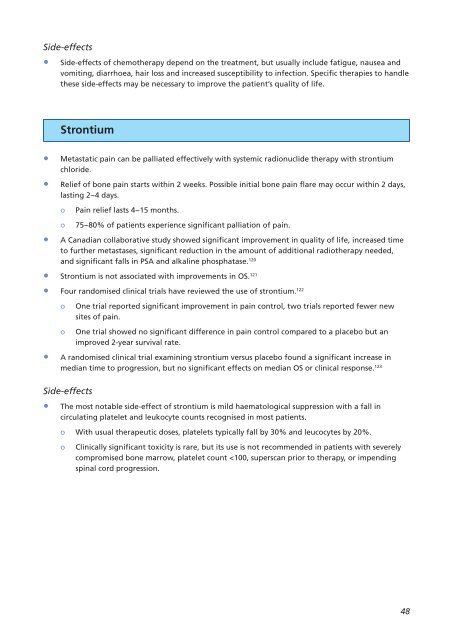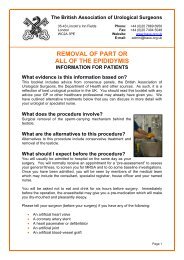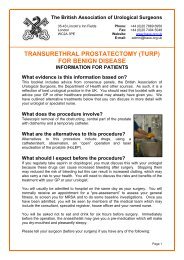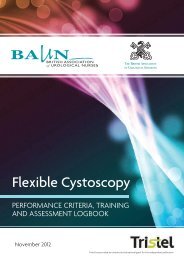MDT (multi-disciplinary team) guidance for managing prostate cancer
MDT (multi-disciplinary team) guidance for managing prostate cancer
MDT (multi-disciplinary team) guidance for managing prostate cancer
You also want an ePaper? Increase the reach of your titles
YUMPU automatically turns print PDFs into web optimized ePapers that Google loves.
Side-effects<br />
• Side-effects of chemotherapy depend on the treatment, but usually include fatigue, nausea and<br />
vomiting, diarrhoea, hair loss and increased susceptibility to infection. Specific therapies to handle<br />
these side-effects may be necessary to improve the patient’s quality of life.<br />
Strontium<br />
• Metastatic pain can be palliated effectively with systemic radionuclide therapy with strontium<br />
chloride.<br />
• Relief of bone pain starts within 2 weeks. Possible initial bone pain flare may occur within 2 days,<br />
lasting 2−4 days.<br />
o Pain relief lasts 4−15 months.<br />
o 75−80% of patients experience significant palliation of pain.<br />
• A Canadian collaborative study showed significant improvement in quality of life, increased time<br />
to further metastases, significant reduction in the amount of additional radiotherapy needed,<br />
and significant falls in PSA and alkaline phosphatase. 120<br />
• Strontium is not associated with improvements in OS. 121<br />
• Four randomised clinical trials have reviewed the use of strontium. 122<br />
o One trial reported significant improvement in pain control, two trials reported fewer new<br />
sites of pain.<br />
o One trial showed no significant difference in pain control compared to a placebo but an<br />
improved 2-year survival rate.<br />
• A randomised clinical trial examining strontium versus placebo found a significant increase in<br />
median time to progression, but no significant effects on median OS or clinical response. 123<br />
Side-effects<br />
• The most notable side-effect of strontium is mild haematological suppression with a fall in<br />
circulating platelet and leukocyte counts recognised in most patients.<br />
o With usual therapeutic doses, platelets typically fall by 30% and leucocytes by 20%.<br />
o Clinically significant toxicity is rare, but its use is not recommended in patients with severely<br />
compromised bone marrow, platelet count

















